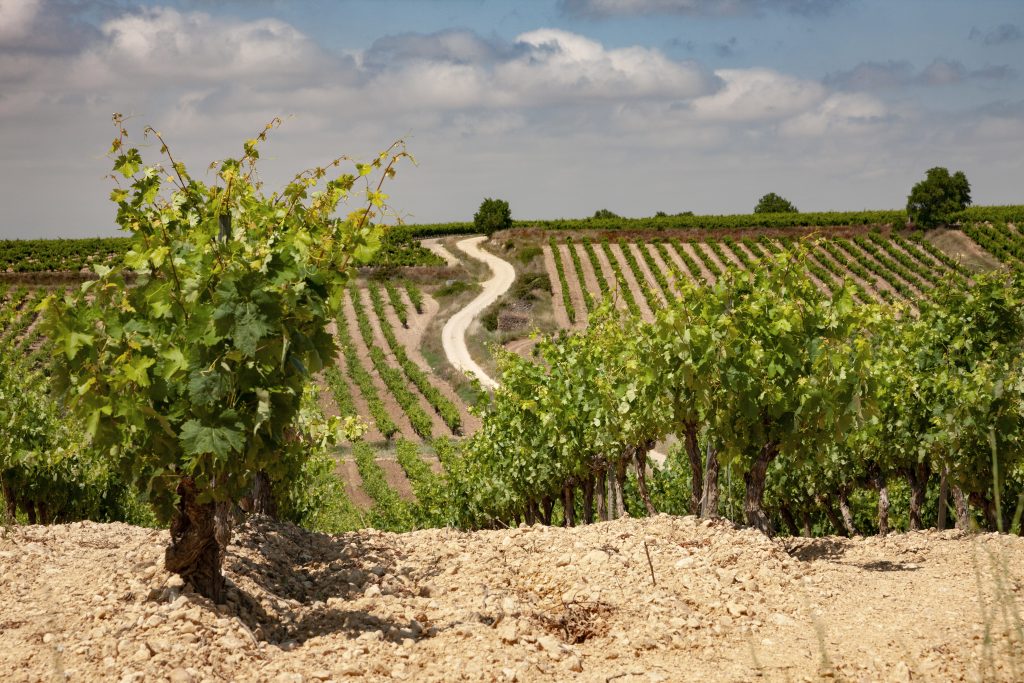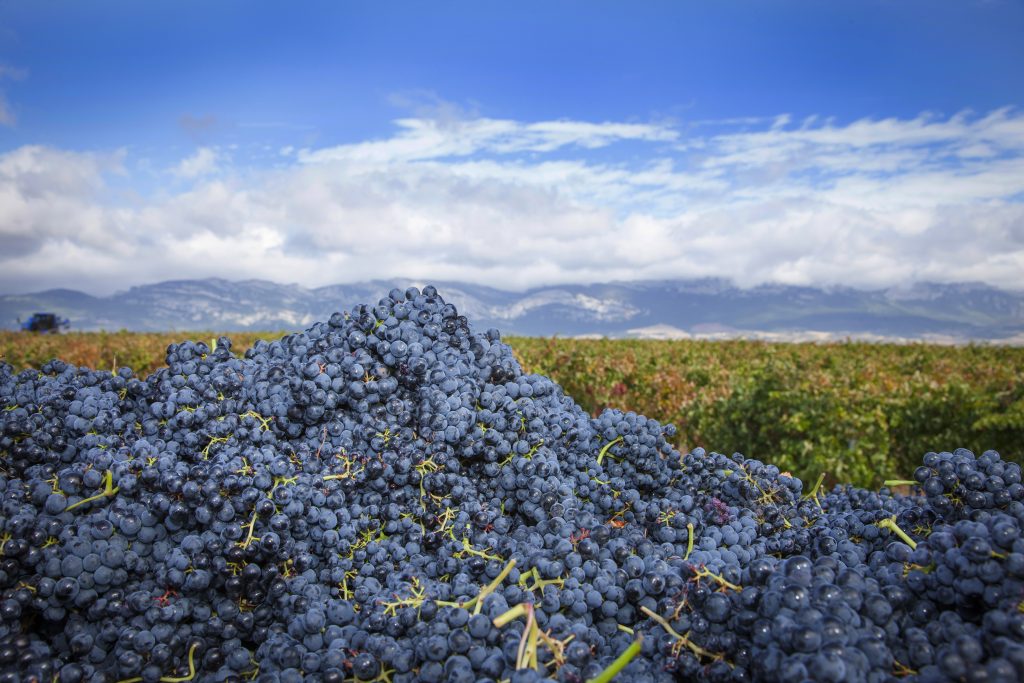Bodegas Muriel. 90 Years. 3 Generations.
Located in Northern Spain, and sheltered below the Cantabrian mountains, Rioja is one of the world’s best known wine regions with a 2018 consumer study by Wine Intelligence ranking Rioja in fourth place as ‘brand’ of choice in 12 key global markets (including the UK and the US). Producing around 300 million litres of wine annually, 90% of this volume is red and the rest a combination of white and rosé. The highly versatile Tempranillo grape reigns supreme, offering crowd-pleasing juicy dark berry flavours in younger wines, with longer oak ageing adding savoury, dried fruit characteristics. Other local varietals add seasoning to the final blends (Garnacha, Graciano and Mazuelo in particular) yet it’s the consistency and quality of the Tempranillo grape and its synergy with the sweet flavours of the American oak barrels across a range of styles that explains why Rioja is considered a brand, rather than just a wine region, in its own right.
Bodegas Muriel has been a lynchpin of the region since its beginnings in the early 20th Century. José Murúa founded Bodegas Murúa in 1926, coincidentally the same year in which the official Rioja Denomination was formed. José sold his wines in the Basque cities of Bilbao and San Sebastian where the demand for high-quality Rioja wines was growing. He later sold the winery to the Masaveu group in 1972.
In 1986 José’s son Julián followed in his footsteps and launched Bodegas Muriel, with the name incorporating the family name Murúa, Rioja, and Elciego. Elciego, in the Rioja Alavesa, is the winery site and headquarters of the group. Fast forward to the beginning of the 21st Century and the third generation: Julián’s son Javier assumed day to day responsibilities for the winery, expanding in to international markets and becoming the umbrella group for an increasing number of brands. Muriel’s continual success and growth has led them to become a crucial player in the Rioja wine industry today.
Recent changes in the structure of the Rioja DOC are helping to elevate the region’s status yet further. In 2018 the Rioja Consejo Regulador updated the DOC legislation to allow villages or municipalities on to the label, in a similar wine to the Burgundy system. The aim of the restructure was to reflect Rioja’s increasing diversity. Before, the key indicator of a high-quality Rioja was oak-ageing. However, the new regulations move the focus away from this and allow wine producers to focus on differences in micro-climates. Rioja offers a range of soils and microclimates throughout the region, so it’s an exciting time for innovative wine producers and consumers to be able to denote the style and quality of grapes from exact locations within the region.




